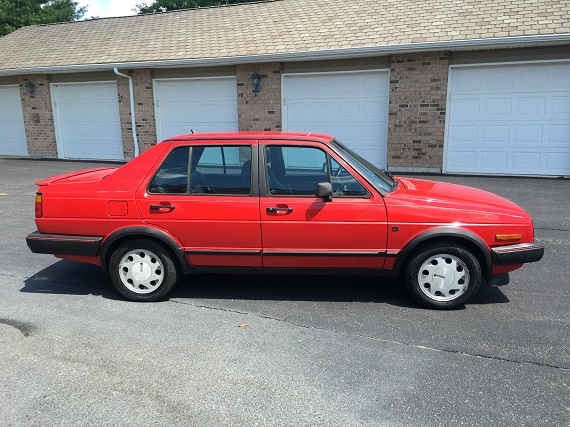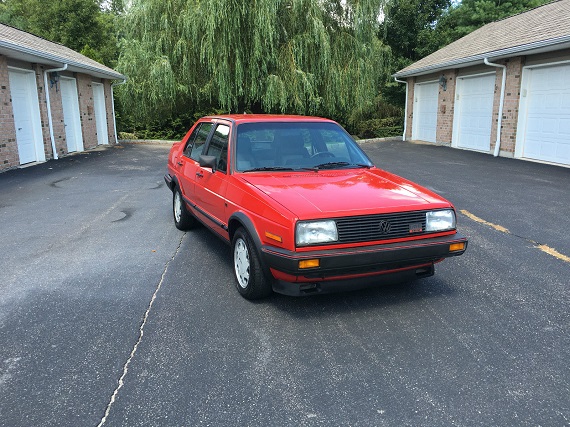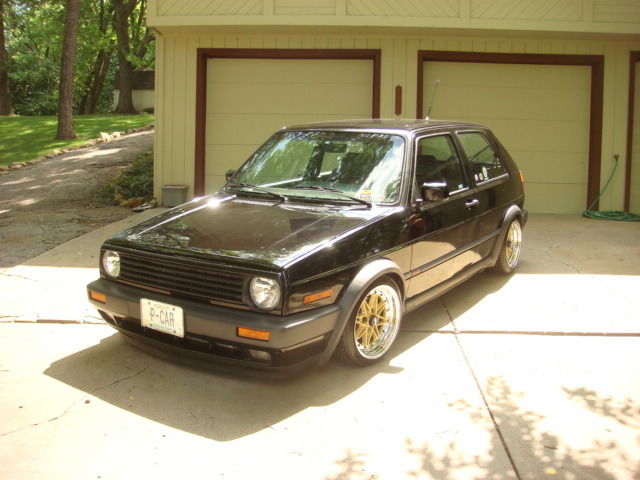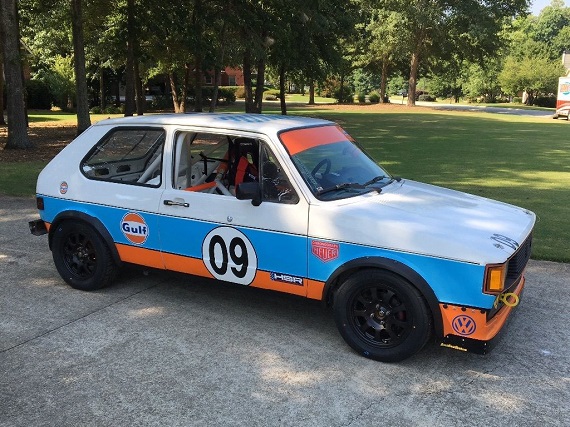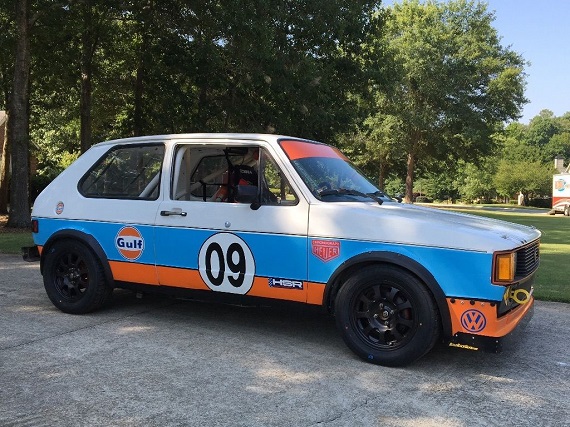As I talked about in a post last April, the 1987 Volkswagen GLi 16V had some unique trim features. 1987 was the sole year in the U.S. that you could buy both a 16V and 8V GLi. Upgrading to the DOHC motor got you a rear spoiler and deeper front spoiler with integrated brake ducts. Though they were the same 14″x6″ size of the 8V model, 16Vs got the signature “Teardrop” alloys (though their actual name is Silverstones). Inside you got some awesome Recaro seats in place of the normal sport seats, and the more luxurious GLi models had many power features available. Both 1987 models retained the earlier split front door window design and narrow door trim as well as the 7-bar grill, but the 16V GLi also got a roof-mounted Fuba antenna. That particular 1987 I looked at in April was in awesome condition with near 140,000 for, so this one should be spectacular with 90,000 miles less:
Tag: Volkswagen
On a recent visit to Coventry Motorcar I was shown the “Tuning Drawer”: one pull-out drawer in an admittedly large and cool rolling tool chest full of cords, plugs, and modules. Today, that’s what it takes to tune a car; not cams, throttle bodies, head work or a high pressure fuel pump. Designing those parts to fit into modern motors and still have them leap through the hoops of getting certified by the EPA means that only the richest and most respected tuning firms can produce parts to fit into these complicated motors, and even then they’re more often than not highly reliant upon computer reprograming rather than internal rebuilds. Today’s GTi may not look particularly outrageous from the outside, but it brings us back to a more simple time in tuning, an analogue age where jumps in horsepower were measured in single digits, not in groups of 100 or more:
CLICK FOR DETAILS: 1992 Volkswagen GTi 16V on eBay
2 CommentsFrom one iconic Porsche livery in the Martini Racing colors, we move on to another equally if not more recognizable color scheme for Stuttgart; the John Wyer run Gulf Racing with the unmistakable blue and orange combination. Yet, this time we’re not looking at a Porsche, but Volkswagen GTi. Perhaps the GTi doesn’t quite have the racing repertoire of the 911 more often associated with Gulf, but these potent pocket rockets have been popular race platforms since their inception. The original GTi makes an excellent and affordable race chassis, and while the newest models are an amazing 32 years old now they’re still hitting the track and winning.
CLICK FOR DETAILS: 1984 Volkswagen GTi on eBay
Comments closed
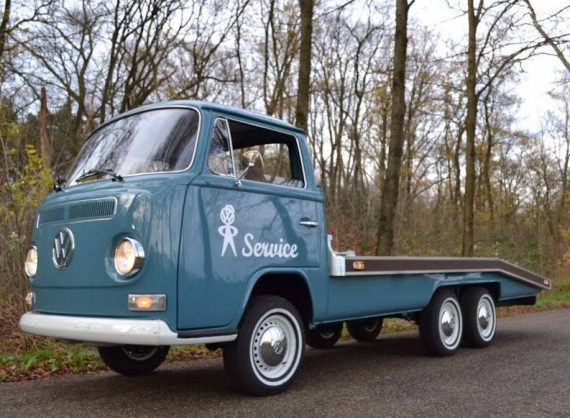
Custom conversions can either go really well, or really poorly. Most of the time it is really poorly. But not today. What started life as a Volkswagen Type 2 factory single cab dropside pick-up is now a flatbed hauler with an extra axle thrown on there for good measure. Now before you get excited about that extra axle, it’s only along for the ride as it looks like only the second axle is functional. Once I started digging into the (sparse) information on this T2,  it was built and used to be a working car hauler — save for one big problem. So let’s check out this once Californian T2 that now resides in the Netherlands.
CLICK FOR DETAILS:Â 1972 Volkswagen T2 Tandem Axle Flatbed on Classic Trader
1 CommentI’ve spent a fair amount of time documenting the importance of Porsche’s 924 model on these pages, but the first generation Volkswagen Golf was equally if not more important. Like the 924, it signaled the shift for the Wolfsburg firm from its tried and true air cooled roots into the modern age of water cooled, front-engine designs. Taking the design pioneered by the Mini, Volkswagen adopted a transverse engine layout driving the front wheels. To package their new platform, Volkswagen turned to Giuigaro, an ex-Ghia employee who had helped design the swoopy and popular Karmann Ghia. But the shift from air to water cooling needed a new direction, and capitalizing on the wedge designs he had pioneer in cars like the Maserati Merak and Lotus Esprit, Giugiaro made an angular but pretty design with a signature large greenhouse. While not a revolutionary design in either engine, platform or interior/exterior look, the first generation Golf hit the market at just the right time – in the midst of the OPEC-driven oil embargo. The effects were long reaching in the U.S. even though the embargo was lifted in 1974; we adopted a national speed limit, daylight saving time was invented to reduce electric consumption and small, efficient cars like the Golf became popular. Like the 924, in addition to being a sales success in its own right, the Volkswagen Golf was the platform which launched several successful other models. The Scirocco, Jetta, Cabriolet and third generation Passat all came from the original design, along with pretty much every single car VAG makes today. But unlike the 924, appreciation for the original design has been very widespread and the first Golf was even nominated for (and came close to winning) Car of the Century. As cars have become increasingly complex, fast, heavy and expensive, the this 1978 Rabbit brings us back that more simple time:
